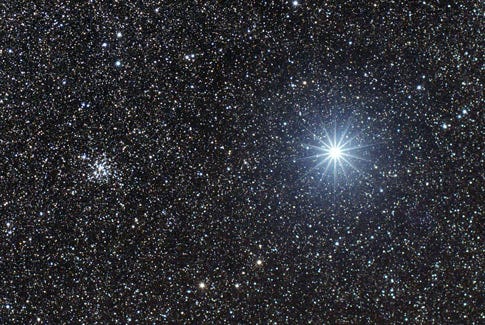Mind Candy: After Your Partner Blows Their Top
Sirius A, the brightest star, has an exhausted friend.
Just because everything can’t be dealing with a Toddler with a Retribution Complex. …
Sirius A—to the right, above—is the brightest star in the sky and an extraordinary wonder. It sparkles like no other, emitting what looks like flashing lights in multiple shades of blue, red, and purple. Actually, Sirius A, which rotates every 5.5 Earth days, is wobbling wildly on its axis due to the presence of the open star cluster to the left, Sirius B.
Once they were a pair of bright stars, but then Sirius B went nova, violently exploding. For 50,000 years, it was surrounded by a planet-generating halo of luminous gases. Then those gases were “winded” off out into space, leaving an open cluster of stars whose immense gravity causes its bright, beautiful neighbor to judder.
To our eyes, this interaction between the brightest star we can see from Earth and her “dark” partner appears as heaven’s most spectacular sparkler.
Sirius is located in a rather small constellation, Canis Major. It is visible in the evening skies of late winter; in late summer, you'll find it in the east in the hours just before sunrise.


